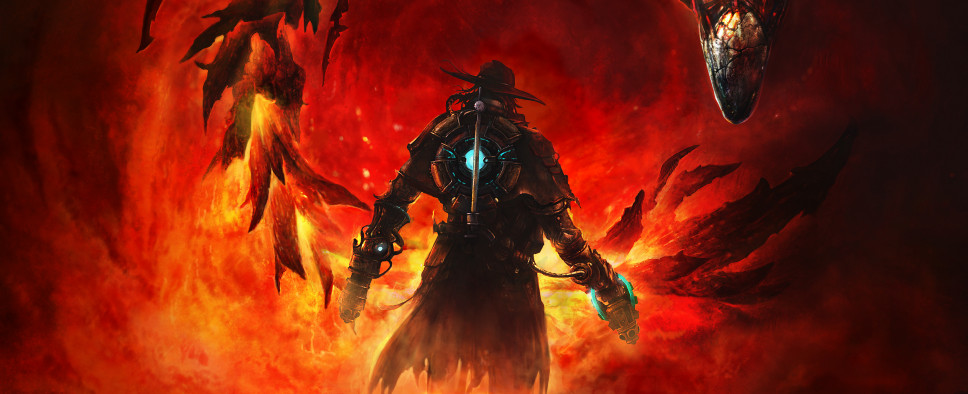The Incredible Adventures of Van Helsing III Review
-
Category: ReviewsHits: 16216

Article Index
Introduction
The Incredible Adventures of Van Helsing III is the finale in Neocore Games' action RPG trilogy centered around Van Helsing and his spirit companion Katarina. It picks up right where Van Helsing II left off, with Van Helsing and Katarina hunting for Prisoner Seven, their former ally and current nemesis. Their search takes them through haunted forests, evil circuses, and diabolical laboratories, and once again they have to face off against creatures blended between medieval fantasy and weird science.
Character Development
Interestingly, there isn't any way to import a character from either of the first two games into Van Helsing III. You start a new character at level 1, and you pick one of six new classes: Protector (sword and shield melee fighter), Bounty Hunter (pistol-wielding ranged fighter), Elementalist (magic user), Umbralist (hit-and-run melee fighter), Phlogistoneer (heavy gun wielder), or Constructor (ranged fighter with a host of mechanical allies). It's a little odd that Neocore allowed you to import characters into Van Helsing II but not Van Helsing III, but this is fine with me. My favorite part of an RPG is almost always at the start of the game when my character is brand new.
Characters are built in roughly the same way in Van Helsing III as they were in the first two games. Each character is defined by four attributes (body, dexterity, willpower and luck), nine skills, eight auras (only three of which can be active at once), and ten perks (which you unlock as you play the game). The main difference this time around is that instead of gaining five attribute points each level, characters only receive two, which means you have to be more careful about how you assign your points -- or just dump them all into your character's main attribute, which is what I ended up doing.
I started out playing a Bounty Hunter in the campaign, because that was my favorite class in the first two games. But Neocore made some curious decisions when creating the new classes, and one of them was to give the Bounty Hunter's default attack a charge-up ability, which means the more you hold down the left-mouse button, the more powerful it becomes. That sounds fine, but unless you want a very slow, very powerful attack (which you probably don't), you have to click every time you want to attack. I was able to do that sort of thing when the original Diablo came out twenty years ago, but no longer, and I gave up on the Bounty Hunter quickly.
So I switched to the Protector, which is the sort of character I normally play in RPGs. Protectors get skills that allow them to block attacks with their shield, deal massive damage with their sword, spin around and damage all enemies around them, and more. Sort of sadly though, with only nine skills per class (which is far less than in the original Van Helsing, let alone Van Helsing II) there aren't that many ways to build characters, and so character development isn't as fun.
Meanwhile, along with building up Van Helsing, you can also build up Katarina. Katarina is defined by attributes and skills just like Van Helsing is, but nothing about Katarina changed between Van Helsing II and Van Helsing III, and so however you built her up before will probably work again just fine. Sort of oddly, while the level cap for Van Helsing is 30, Katarina can only reach level 25.
Gameplay
The engine for Van Helsing III looks like it's about the same as the engine for the first two games. Once again you're presented with an isometric view of the game world, and you control Van Helsing using some combination of the mouse and keyboard, or even a controller if you feel so inclined. I used the WASD keys to move Van Helsing around, the mouse buttons to attack, and the 1-6 keys to trigger skills. The controls are pretty simple, and you're allowed to map them however you want, so it's easy to jump into the game and start playing.
The campaign takes place over several maps, where each map contains a bunch of monsters to kill and usually a quest or two to complete. The monsters are colorful and there is a wide variety to them, but most of their differences are more cosmetic than meaningful. Generally, action RPGs come with several enemies that you have to pay attention to -- healers, spawners, glass cannons and so forth -- but in Van Helsing III I only encountered a couple. One vampire creature could freeze me briefly, and one spirit had a nasty cold spell, and that was it. I was able to just grind through everything else, and it was a rare occurrence when I had to change my tactics, or use tactics at all.
In fact, the combat was so easy for my Protector that it got a little boring. My Protector only died four times during the campaign, and it was always during a boss fight when he was swarmed by enemies. Normal battles held no challenge at all, and I just had to slog through them to get to the interesting boss battles. I'm not sure if this was an issue with the Protector class being too powerful, or the "hard" difficulty setting being too easy, or some combination of the two. Later, I sampled some of the other classes on the "heroic" setting, and I actually had to work a little, so the game can probably be made challenging regardless of your skill level.

